Edithcolea grandis, also known as the Persian Carpet Flower, is a leafless branched succulent native to the African Great Lakes region, the Horn of Africa, as well as Yemen and the Socotra archipelago. This unique-looking succulent is typically found at altitudes of between 200 and 1400 meters above sea level.
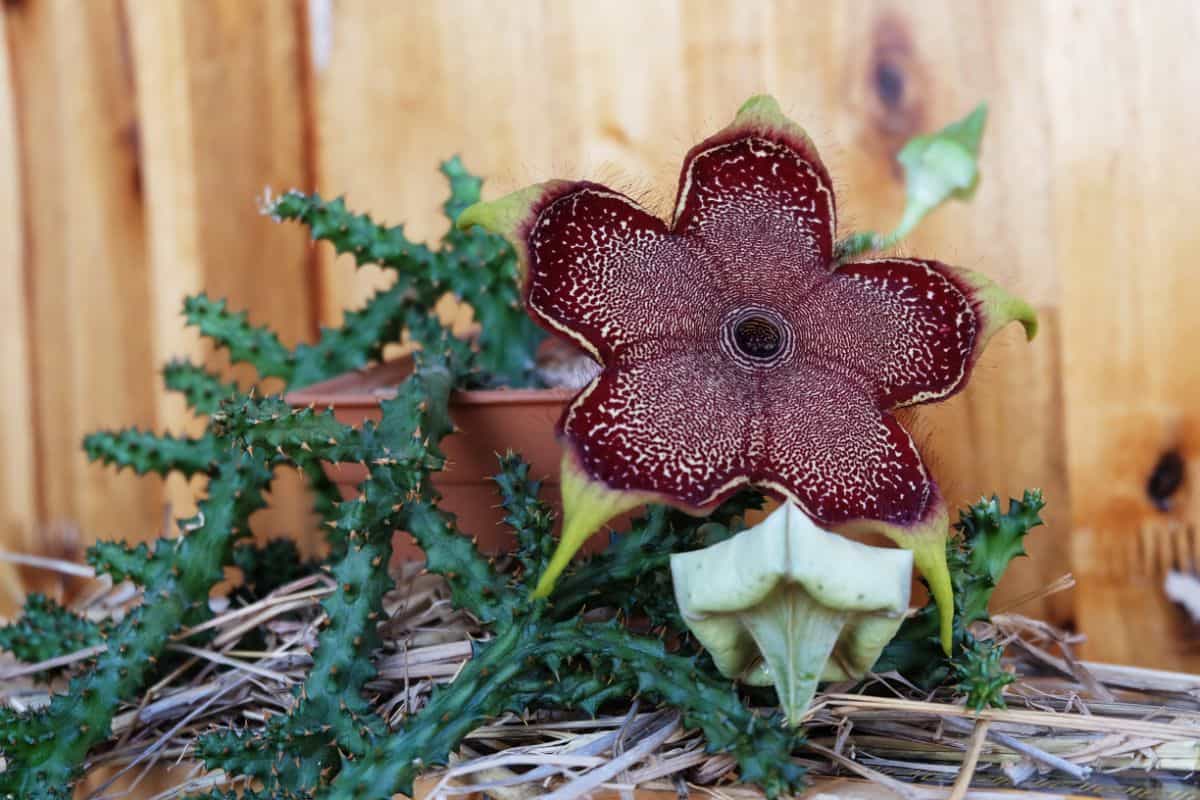
Like many succulents, in their natural habitat, the Persian Carpet Flower prefers dry arid regions. Some do grow naturally in full sun, but most thrive in the partial shade of surrounding rocks and shrubs.
This flower is named after botanist Edith Cole, who collected the plant during a botanical expedition in Somaliland in the mid-1890s.
Edithcolea grandis is frequently eaten as a vegetable in parts of Ethiopia and Somalia. Only the stem is consumed. Elsewhere, this plant is a popular ornamental among succulent lovers. However, it has a reputation for being somewhat difficult to care for as it has very specific needs.
Jump to:
Edithcolea grandis Appearance
| Name: | Edithcolea Grandis |
| Soil: | Fast-draining soil |
| Blooming: | November to April |
| Light: | Full sun or partial shade |
| Water: | When the soil is fully dry out |
| Propagation: | Cutting. offsets and seeds |
As mentioned previously, the Persian Carpet Flower is a leafless succulent. It has many branches on its sharp-toothed stems. This succulent is greyish-green or red in color with brown spots. The stems themselves grow up to about 12 inches in length and just over 1.5 inches in diameter.
The stems typically have four or five angles and are covered with hard spine-shaped tubercules. This plant is glabrous, which means it is completely smooth and lacking in any type of velvety coating or farina.
The most distinctive feature of E. Grandis is its flowers. The pale-yellow flowers measure up to 5 inches in diameter and are covered in reddish-brown spots. They also have long, purple-hued hairs covering them. The flowers have five petals that are fused together halfway to the center.
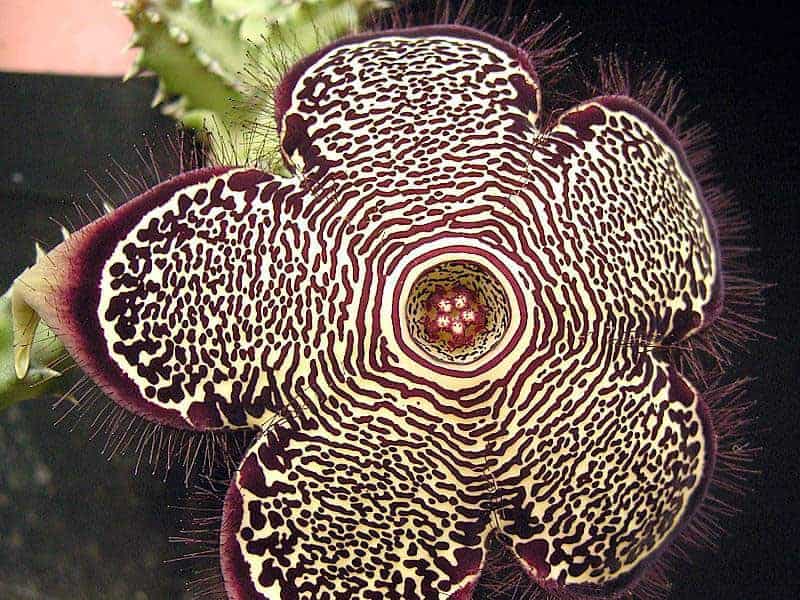
Buy it from:
The flowers of Edithcolea Grandis are bisexual, which means they contain all the reproductive organs needed to self-pollinate. They are also known for their carrion-like odor, which attracts flies for pollination.
Cultivars
There is only one other known cultivar of the Persian Carpet Flower. It is known as Edithcolea grandis var. baylissiana. It can be distinguished from the original by its stems, which are more numerous, shorter, and smaller in diameter. The stems are also frequently twisted in a spiraled fashion.
Caring for Edithcolea grandis
The Persian Carpet Flower has a reputation for being difficult to care for. It has specific needs that can be difficult to manage for the average gardener. However, it is possible for them to thrive in a variety of climates, so long as they are given enough light and warm temperatures.
If you can get their care right, you may be rewarded with stunning flowers. Just be aware that these flowers don’t have the pleasant scent you might be expecting.
No products found.
Water
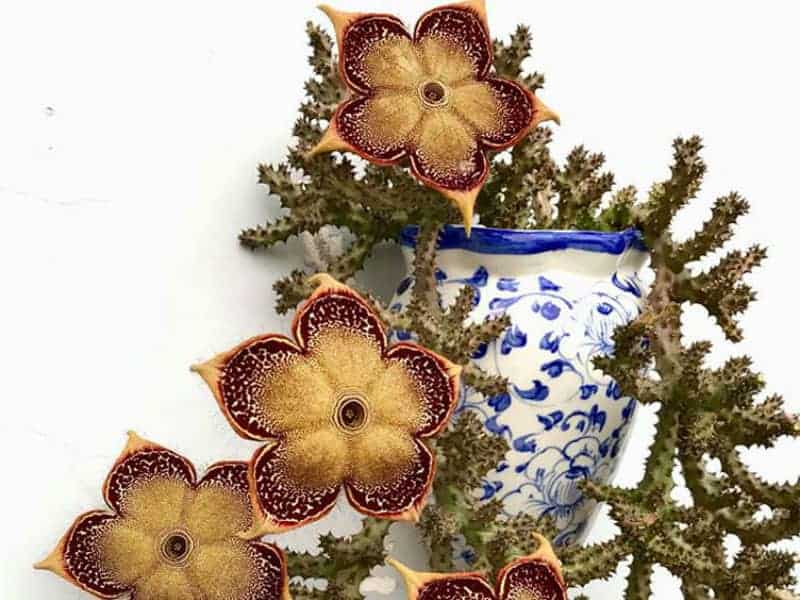
As with most succulents, Edithcolea Grandis is prone to overwatering, so it is important to be cautious about your watering habits. These succulents should be watered deeply each time, to where the excess water drains from the bottom of the pot.
The soil should always be allowed to fully dry out before watering again. The dryness of the soil can be determined by using a soil moisture meter or by inserting your finger into the soil near the roots. If the soil is still moist, it’s best to wait a few days before checking again. If the soil is dry, you can water without worry.
During the winter, E. grandis should be watered sparingly to prevent overwatering. Too much water combined with the cooler temperatures of winter is a recipe for root rot with this plant.
This plant should be watered regularly during the growing season, especially when it’s hot out. As temperatures change, it’s important to change your watering schedule to adapt.
Remember, water doesn’t evaporate as quickly during cool or humid weather, so you’ll need to reduce watering to accommodate this. During particularly hot or dry weather, you may find yourself watering your succulent more frequently. This is fine as long as you make sure the soil is dry before watering.
Light
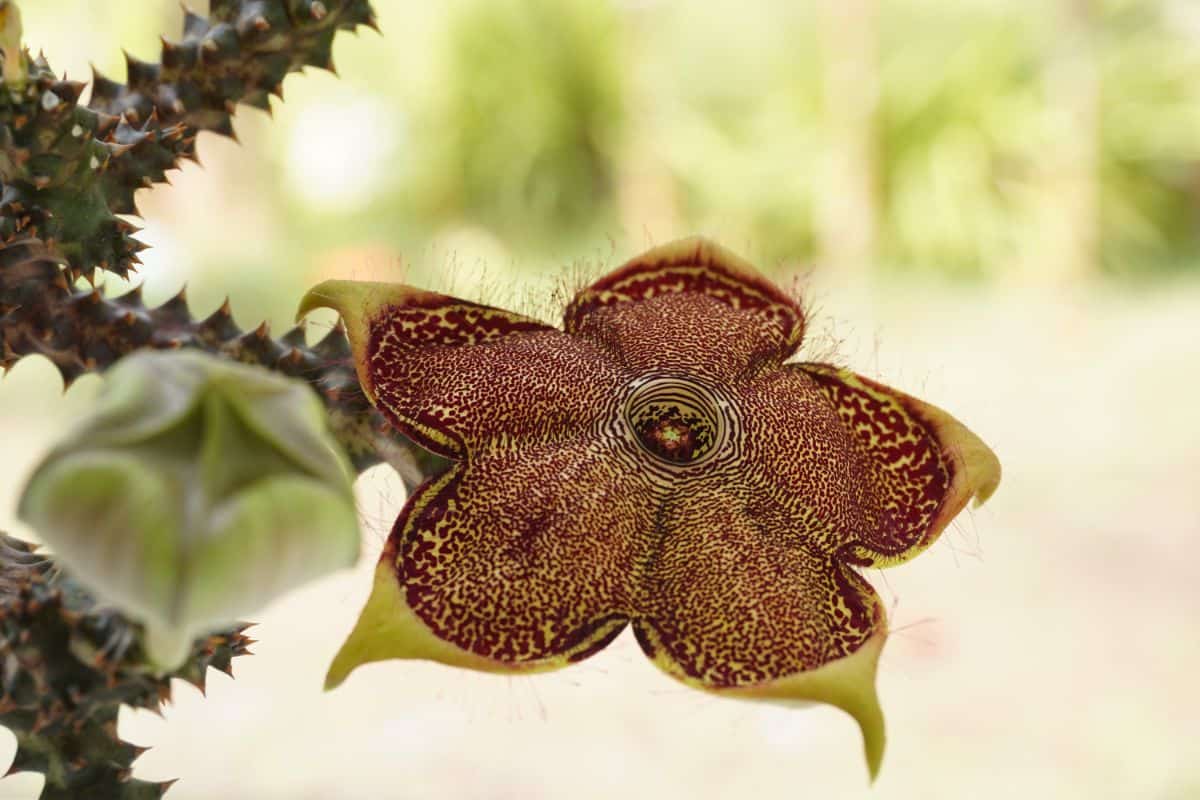
Edithcolea grandis is not a great plant for low-light environments, so it won’t thrive in all indoor spaces unless you’re willing to provide it with a grow light. A south-facing window will provide the most light, but in some cases, an east or west-facing window may also work.
Remember, these plants are used to living in full sun or areas with partial shade, so they need a lot of light in order to grow correctly. If your indoor space doesn’t provide enough light, you may want to consider investing in a grow light.
The Persian Carpet Flower can be grown outdoors, but caution must be taken during the winter as they have specific temperature needs. However, if you live in the right climate, or are willing to bring your plants indoors during the winter, it is possible to grow this succulent outdoors.
As with indoor spaces, they need plenty of light. Full sun is ideal, but partial shade will also work. If it gets particularly hot during the summer months, such as in the southwestern United States, the partial shade will help keep the plant protected from the sun during the hottest hours of the day.
Temperature
The temperature requirements of Edithcolea grandis are the biggest problem that most gardeners have while trying to grow this unique succulent. Few succulents tolerate freezing temperatures, but this plant, in particular, requires warm winter temperatures.
Ideally, temperatures should be kept above 60 degrees Fahrenheit year-round. When growing this plant indoors, it’s fairly easy to achieve this but in much of the world, this can be a difficult thing to achieve when growing it outside.
When growing this succulent indoors, it’s important to not only keep the indoor temperature above 60 degrees Fahrenheit, but you’ll also need to protect the plant from sudden changes in temperature as well as drafts.
Soil
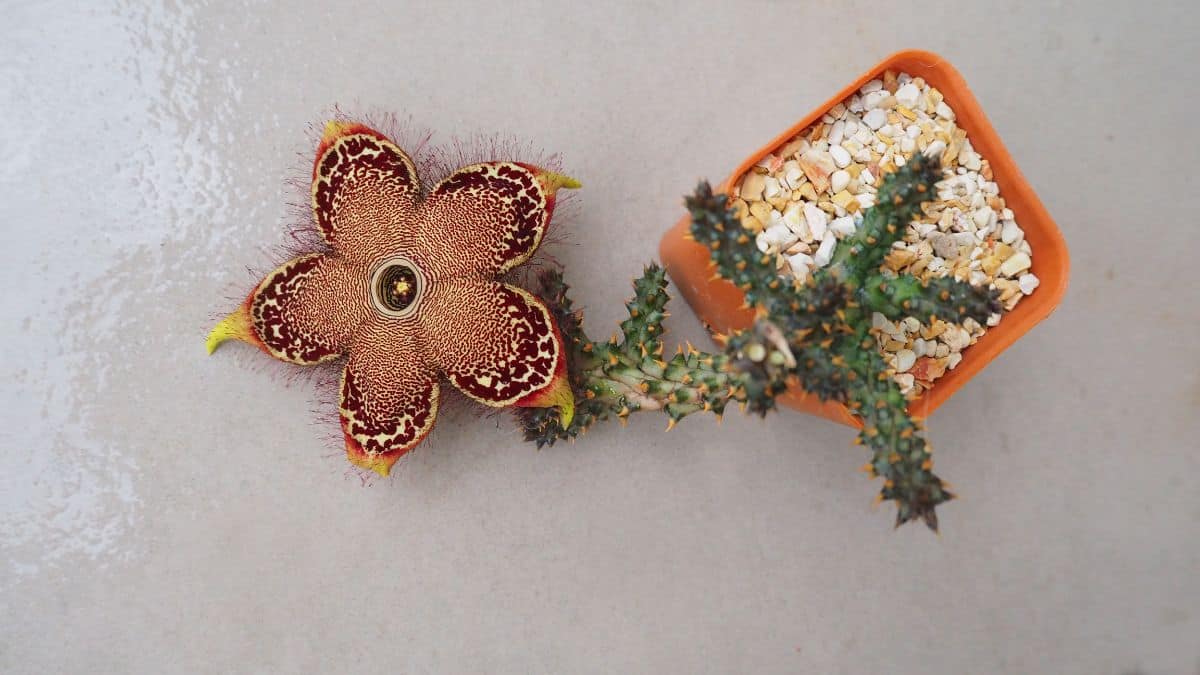
As with most succulents, Edithcolea grandis requires fast-draining soil. Avoid soil containing large amounts of water-retaining ingredients like clay and peat moss. Instead, look for larger particles that will promote better drainage and airflow such as coarse sand, pumice, perlite, and gravel.
If you’re not the DIY type, you can purchase commercial cactus soil at your local nursery or garden center. Many of these mixes will work fine, but you can also add additional material to adjust the soil to your needs.
Once you’ve chosen a gritty, fast-draining soil, make sure you also choose a container that allows excess water to drain from the bottom of the pot. Without a drainage hole, you’re putting your Persian Carpet Flower at risk of overwatering.
Read Related Article: Vicks Plant
Propagating Edithcolea grandis
Despite its difficult care requirements, E. grandis is not a difficult succulent to propagate. Propagation can be done with offsets, cuttings, and seeds.
Offsets
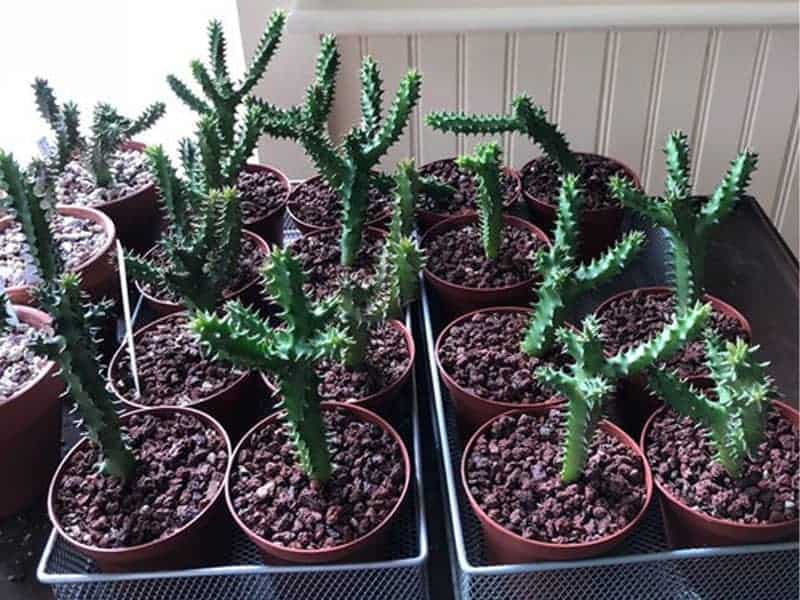
The Persian Carpet Flower does not frequently produce offsets, so it may be difficult to use this method of propagation very often. Most gardeners prefer one of the other methods instead. However, if your plant does produce offsets, it’s quite easy to separate them.
Simply brush away the topsoil so you can see some of the root systems and use your fingers to gently pull the offset away from the mother plant. Use caution as these plants are spiky. You may want to consider wearing gloves or using a towel or newspaper to protect your hands.
Once separated, you need to let the offsets air dry for a few days to allow any open wounds to callous before planting them in a new container. After they’ve calloused, they’re ready to be placed in their own pots and can be treated just as you would a mature plant.
Cuttings
Edithcolea grandis can be grown from cuttings, but it’s important to collect the cuttings at the right time of year. Many propagation experts recommend taking cuttings during the summer as the heat seems to encourage faster root growth.
Persian Carpet Flower cuttings can be taken using a sharp knife or pair of scissors or gardening shears. Snip a branch or stem off of the main plant, making as clean of a cut as possible. Again, you’ll need to give the cuttings a few days to callous before you can plant them.
These succulents have a reputation for being somewhat difficult to root, but with the right care, it’s not impossible. Some gardeners recommend using rooting hormone powder to increase your chances of success. As previously mentioned, if you can attempt this project during the heat of the summer you may also have better chances.
Once your cuttings have calloused, you can dip them in rooting hormone powder if you choose and then set them in their own containers. It’s best to lay them on the soil rather than bury them. Keep the soil moist, but not overly wet and within a few weeks, you should begin to see tiny roots developing.
Once your cuttings have begun to produce roots, you can start treating them just as you would a mature Persian Carpet Flower.
You May Also Like: Kalanchoe 'Pink Butterflies'
Seeds
Another common method of Edithcolea grandis propagation is with seeds. If you already have a few of these plants, you can collect seeds from them after blooming. As the flowers of these plants are bisexual, they are self-pollinating, so it’s not hard to get them to produce seeds.
If you don’t already have a Persian Carpet Flower or simply do not want to collect the seeds, you can also purchase them from a reputable seed vendor online.
Once you have your seeds in hand, you are ready to sow the seeds. It’s recommended to do so in the spring to give the plant the most active growing time.
Sprinkle the seeds across well-draining soil and keep the soil moist, but not overly wet. Covering the soil can help preserve moisture. After a few weeks, you should see tiny seedlings sprouting up from the surface of the soil.
Once the seedlings have sprouted, you can remove the cover and allow the soil to dry out a bit. Both seeds and seedlings can rot if exposed to excessive moisture, so it’s important to let the soil dry out a bit between watering.
After the seedlings have reached a size where they can be safely handled without damage, they’re ready to be transplanted to their own containers.


